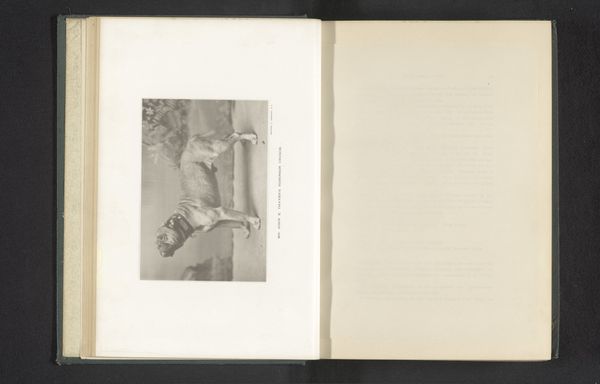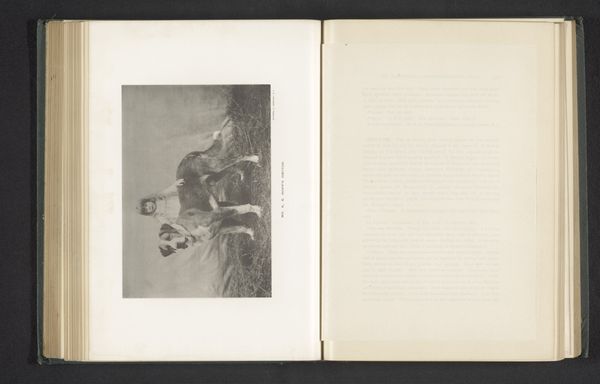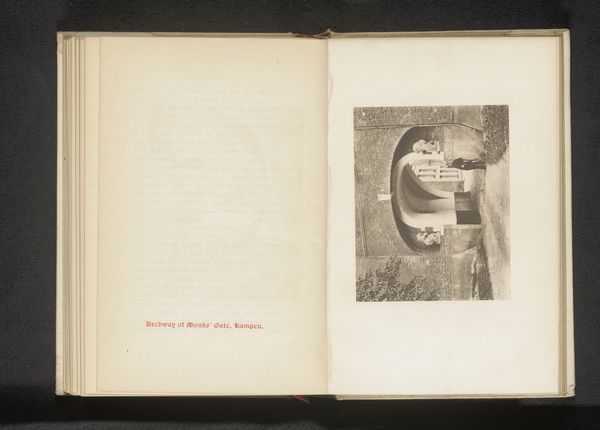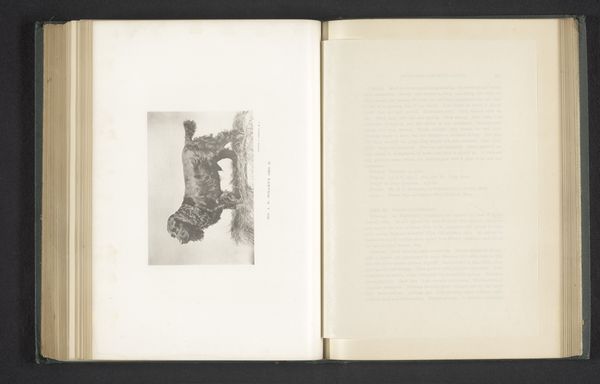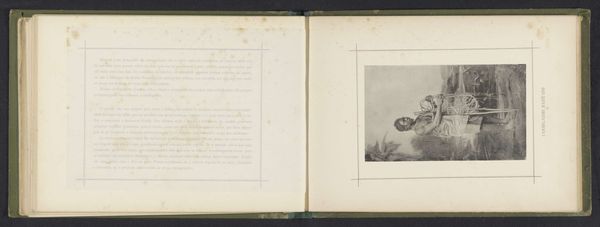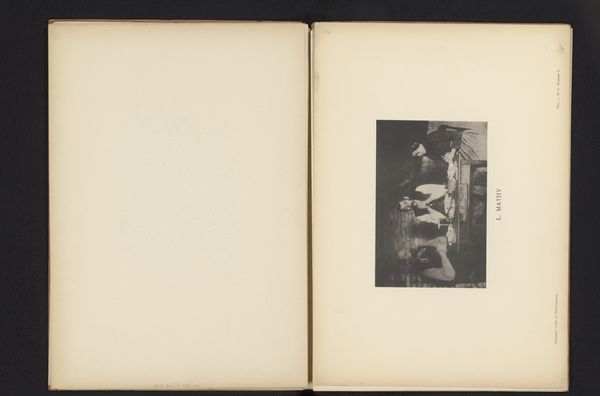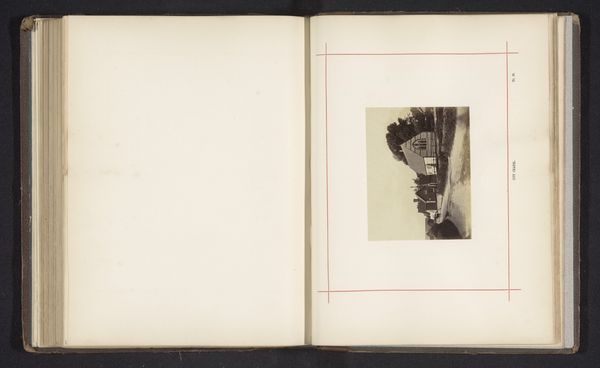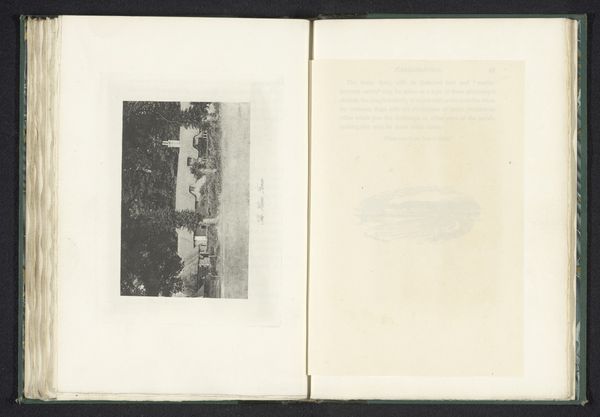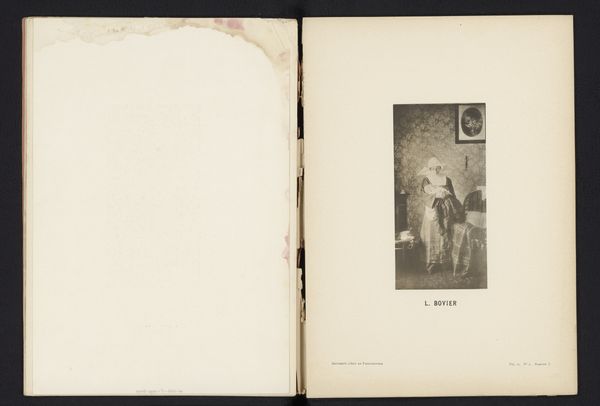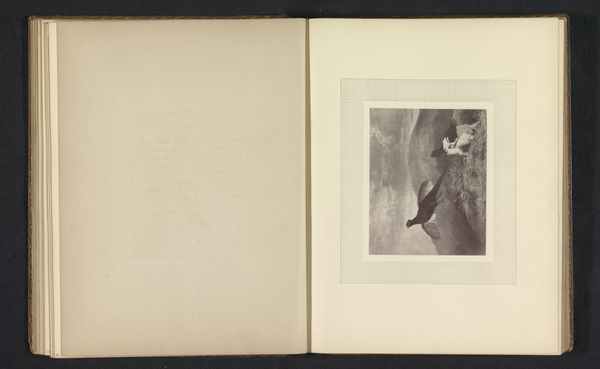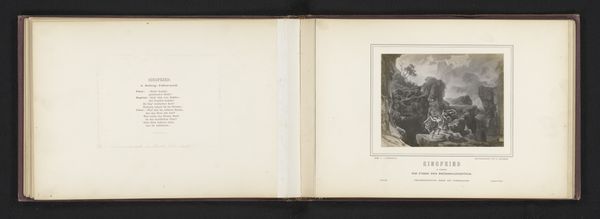
photography, gelatin-silver-print
#
portrait
#
photography
#
gelatin-silver-print
#
realism
Dimensions: height 110 mm, width 98 mm
Copyright: Rijks Museum: Open Domain
Curator: Before us we have an interesting gelatin-silver print dating to before 1888, entitled "Buldog". The photographer remains anonymous. Editor: Wow, what a grumpy mug! That bulldog looks like he’s about to unleash some serious attitude. Sort of has the "Don't even THINK about touching my bone!" vibe, doesn’t it? Curator: I find it interesting how dogs, like certain marginalized groups, have historically been symbols of subjugation, sometimes even tools for control in systems of power. What narratives might we construct through his expression here? Editor: I hear you on the symbolic reading. I get lost in those eyes, though. So intense. It makes me think of the gaze looking back at you—almost saying, "Who are YOU to be looking at ME?". The way the chain cuts across, though… it looks really old timey. Curator: It absolutely invites such inquiry. Early photography often framed subjects within strict conventions reflecting dominant ideologies. Here we have the very common portrait style for pets—signifying their place in upper class households as domesticated companions. I’m really looking at the context—a burgeoning industrial society where even animal portraits were carefully composed status symbols. Editor: Hmm. So it's like saying "look how posh and respectable I am—that I've got this fierce beast, kept pristine inside? Like a well-behaved drawing room menace?" Maybe it has an edge—but honestly, looking at those jowls...it almost makes me laugh with a weird affection, too. Curator: I agree—a duality there indeed, which raises some important questions on how historical photographic portraits helped shape our perceptions about class, power and even companionship. This dog stands as a silent, yet very opinionated, observer of that narrative. Editor: Well, whether he's posh or powerful or just plain unimpressed, that dog definitely makes an impression. Thanks for giving me some really new thoughts today about photographic images—and their narratives of people and pups. Curator: Absolutely. Looking at older art through the intersectional lens allows for really fruitful analysis of meaning and enduring impact on how we see and judge our current realities.
Comments
No comments
Be the first to comment and join the conversation on the ultimate creative platform.
